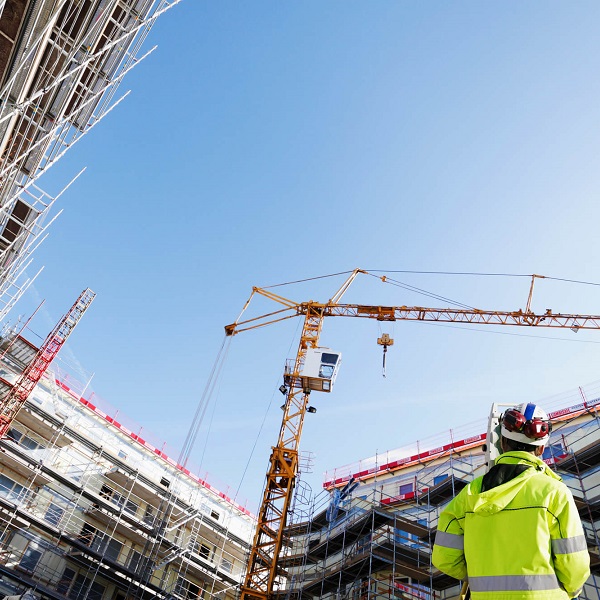
New year, same old problem: How to protect projects without the existence of insolvency insurance
By Paul Reid, Head of Sales Strategy & Operations at IPEX
Despite the dawn of a new year, the generations-old challenge of insolvency looms as large as ever over property development. Construction is an industry fraught with risks. However, unlike protecting a site against bad weather or theft, you can’t insure against the biggest threat facing the industry: builder insolvency.
In 2024, smart, savvy developers are taking numerous practical steps to reduce their exposure. For example, exclusively engaging builders with a proven track record and conducting detailed due diligence (DD) checks before awarding a contract. In spite of that, the issue is only intensifying, with data from Australian Securities and Investments Commission (ASICs) revealing the construction industry continues to be the worst sector for insolvencies. In fact, 727 construction companies entered external administration in December 2023, a 16% increase from December in 2022.
Audits can’t predict risks that may arise during a build
Historically, one of the bigger gaps sits with DD. The issue with relying solely on due diligence checks – irrespective of how detailed – before awarding the contract is that the information is historical, represents only a specific point in time, and provides very little tangible insight into any financial concerns.
Even if resources seem adequate during the awarding of a contract, most builders are juggling multiple projects simultaneously. No audit can accurately and effectively predict future cash flow issues that a builder may encounter on another project or the likely flow-on effect to your project. In recent years it has become crystal clear that any builder – even with a stellar reputation – can be vulnerable to external market forces, especially when navigating challenging contract terms. This is an issue that shows little sign of slowing in 2024.
It can be difficult for builders to ‘prove’ that they are trouble-free
In 2024, builders will undoubtedly continue to suffer from the repercussions of insolvency; the problems faced by some will continue to tarnish the reputation of all. Many builders operate sound and legitimate operations, but unfortunately they’re tarred by the handful of those who don’t. Even those with healthy financial standings are engaged in an ongoing struggle to ‘prove’ their stability. In the absence of transparency, developers can never enjoy complete peace of mind. It’s a challenging process, and the consequences of not getting it right can be catastrophic.
It’s not simply a case of having to pay subcontractors and suppliers again. It’s endless hours trying to reconcile who has been paid and who is legitimately owed money, typically with little to go on besides inaccurate cost reports and the subcontractors word.
Reducing risk means appointing a solvent builder and protecting project funds during a build
The future challenges a builder may face are incredibly hard to predict, making it crucial for developers to both select a financially secure builder and safeguard funds against potential builder cash-flow issues throughout the entire construction period. A way to do this is to introduce an online payment platform like IPEX, which secures project funds, ensuring progress payments are exclusively allocated to approved subcontractors and suppliers associated with that specific project.
Leading payment platforms though only a few exist have the ability to grant developers the option to view payment details, for example who has been paid, when they’ve been paid, the percentage of total payment etc. By agreeing to work under this type of structure, a builder is essentially proving their financial health – confirming that they have no need or intention to divert funds to pay bills linked to other projects. And if a builder faces cash-flow issues after contract award, secure payment platforms ensure fund security, preventing any borrowing from the account.
Should a ‘payment default’ event occur before practical completion, the impact is minimised as any progress payments facilitated are either distributed to approved parties or remain in the account. The developer may also replace the builder as trustee of the funds, gaining visibility over project account transaction history and the ability to pay subcontractors and suppliers directly. An extremely challenging situation can now be resolved relatively quickly, significantly reducing developer holding costs.
From developers, to builder
It’s not only developers and lenders who stand to benefit, through improved security and peace of mind – there are benefits for builders too. Some financially secure builders are taking a proactive approach by integrating payments platforms within their bid, to set it apart from competitors.
The heightened security and transparency also opens up avenues for mutually beneficial revisions to various ‘standard’ payment practices, and some builders are even negotiating significant values – in the region of 2.5% of total project value – upfront.
While the crippling challenges of builder insolvency persist in property development, there are solutions. Property matters to Australia and Australians, and while there isn’t yet formal insurance against its biggest Achilles Heel, there is already a solution that can provide greater trust, transparency and security for the entire industry.

